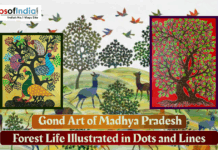The recent Supreme Court ruling in Dolly Rani v Manish Kumar Chanchal that a Hindu marriage cannot be legitimate without a Saptapadi ceremony is misunderstood.
New Supreme Court Ruling: No Saptapadi, No Hindu Marriage
A Hindu lady petitioned to move divorce proceedings from Muzaffarpur, Bihar, to Ranchi, Jharkhand. The couple sought a ruling that their marriage was invalid since no rituals were conducted.
They said they married in Uttar Pradesh using a “marriage certificate” from Vaidik Jankalyan Samiti, a local religious group. Using this document, they obtained a “Certificate of Registration of Marriage” under the Uttar Pradesh Marriage Registration Rules, 2017, and registered their marriage under Section 8 of the HMA. The couple petitioned the Supreme Court to nullify the marriage under Article 142. When no law or regulation provides a remedy, Article 142 allows the Supreme Court to perform “complete justice” between the parties.
Supreme Court Decision
Section 7 of the HMA requires documentation of the Saptapadi and other procedures for a Hindu marriage to be legitimate. When Saptapadi is followed, the marriage is final and legally binding after the seventh stage. Even with marriage documents, Hindu law requires these procedures to recognise a marriage. A marriage certificate that states the couple married, but the ceremony wasn’t conducted under Section 7 of the Act won’t be valid under Section 8.
Challenge the Decision
The Saptapdi ritual is one of many ways to solemnise marriage. An essential reading of the Section shows that Hindu marriage rites must follow applicable usage or customs, which the Court simply stated. Other rites to legitimise the marriage were not included in the judgement. It ignored customs that include only garlands and no elaborate rituals.
Solemnised Marriage
Solemnising a marriage involves a formal ceremony with rituals. In India, marriage is regulated by personal laws and the 1954 Special Marriage Act (SMA).
Landmark Judgement
- S. Nagalingam v. Sivagami (2001): Tamil Nadu’s 1967 HMA amendment simplified marriage customs.
- The Hindu Marriage (Tamil Nadu Amendment) Act of 1967 added Section 7-A to the Hindu Marriage Act of 1955. However, it only extended to Tamil Nadu.
- Section 7-A: Self-Respect Marriages:
The specific clause covers “self-respect and secular marriages”. The law accepts “any marriage between any two Hindus”, also known as “Suyamariyathai” or “Seerthiruththa marriage”.
Laws Relating to Marriage in India
Indian marriage laws vary by religion
- Religion determines personal laws in India.
- Hindus, Christians, and Parsis are married under the Hindu Marriage Act (HMA) 1955, the Indian Christian Marriage Act, and the Parsi Marriage Act, respectively.
- Muslims observe the Muslim Personal Law (Shariat) Application Act of 1937.
- Lingayats, Brahmos, Aryasamajists, Buddhists, Jains, and Sikhs are covered by the HMA.
The Hindu Marriage Act, 1955
- Under Section 7(1), customary rules and ceremonies must be followed for a Hindu marriage.
- Most Hindu groups practise Saptapadi, but not all.
- Saptapad comprises the bride and groom walking seven steps before the sacred fire.
- Section 7(2): If these rituals and ceremonies include Saptapadi, the marriage is complete and legally binding after the seventh stage.
The Special Marriage Act (SMA) of 1954
- It allows legal marriage for Indians and Indian nationals abroad, regardless of religion or beliefs.
- When someone marries under this legislation, the SMA governs the marriage, not personal laws.




